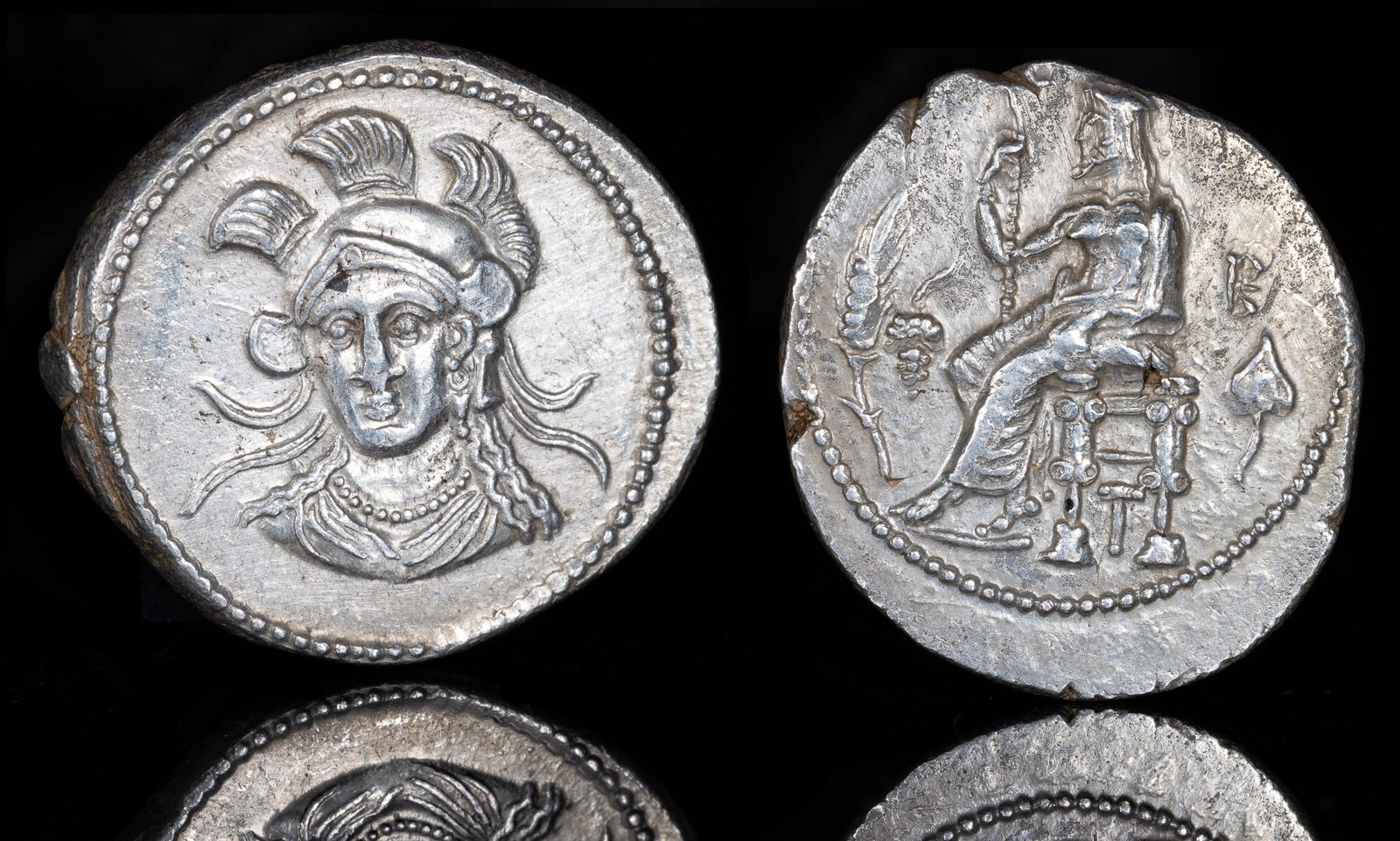
Cilicia, Tarsos AR Stater.
Balakros, satrap of Cilicia under Alexander III.
Circa 333-323 BCE
Facing bust of Athena, draped, wearing triple-crested helmet and necklace / Baaltars seated to left, holding lotus-tipped sceptre; grain ear and grape bunch to left, B above ivy leaf to right, T below throne.
SNG Levante Suppl. 21; SNG BnF 368; SNG von Aulock 5964.
10.79g, 26mm, 6h
In one of my earliest plans on which coins to target, this one from Balakros was on the list – at the time the only Persian satrap. In my opinion, it’s just the quintessential Persian coin, given the portrait.
Of course, the seated Baaltars has been long thought to have influenced the coinage of Alexander the Great, though Mazaios also minted similar coinage.
Balakros was one of the earliest satraps to defect to Alexander‘s side. He takes credit for seeing the lay of the land, and benefited significantly from it. Not only did he receive the satrapy of Cilicia, but he also became one of Alexander‘s most trusted bodyguards.
He also received among the top prizes in wives in Phila, the daughter of Antipater. After Balakros died, she married Krateros. He died too when his horse fell on him, and she later married Demetrios I Poliorketes, who was significantly her junior but with whom she had a strong relationship. When he died, she killed herself. I guess she just felt after three strikes she was out.
But on to more positive matters, Balakros clearly must have had high trust from Alexander to mint his own coins. Unfortunately, he died in battle during Alexander‘s lifetime.
Lysimachos is first appointed as a bodyguard of Alexander III along with Balakros.
Balakros becomes one of Alexander the Great‘s seven bodyguards.
Balakros appointed satrap of Cilicia by Alexander the Great.
Kalas, Antigonos Monophthalmos, and Balakros supress Persian resistance to Macedonian authority.
Balakros is kiled while dealing with an insurrection by the Isaurians and Larandians.